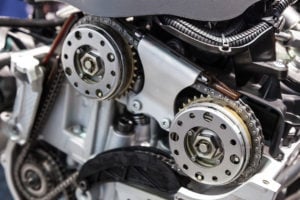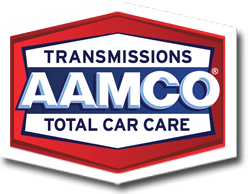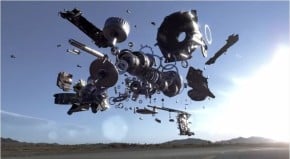What Do You Know of Belts and Chains?
Basic things you need to know about your car’s timing belt or chain.
Some vehicles have timing belts, some have timing chains – both serve to time the engine’s combustion.
The timing belt or chain rotates the engine’s cam and crankshaft in sync so the cylinders fire at the right time. It controls the action of the pistons and valves inside the engine cylinders to ensure the valves open in synchronized time with the pistons. The combustion process of a modern four-stroke engine has four “strokes” or steps: intake, compression, combustion, and exhaust. Throughout an engine’s four-stroke process, the camshaft rotates once and the crankshaft rotates twice. The rotational relationship between the camshaft and crankshaft is called “mechanical timing.” It’s what controls the combustion cycle –pistons and valves moving in sync within the engine cylinders. The valves have to open at a precise time in conjunction with the pistons, and if they don’t, the engine won’t work properly, if at all. If this timing is off, the engine will run unreliably, or might not run at all.
Related: Reasons Your Car is Squealing
What determines if it’s a belt or a chain?
The difference is in the type of engine.
Higher torque engines that do a lot of heavy work, such as towing, are usually equipped with timing chains. Trucks, utility, and heavy-duty vehicles are usually equipped with timing chains, as their engines are regularly subjected to higher stress and have to deliver more power and torque on a consistent basis. Rubber timing belts are found in the majority of small cars and SUVs, particularly 4 cylinder engines that have lower torque. But more and more modern cars are being manufactured with timing chains purely for the durability, and ease or elimination of maintenance or replacement.
Metal timing chains are tougher and last longer than rubber timing belts.
 A timing chain looks much like a bicycle chain. Metal chains serve the same purpose as belts, but last longer. Some manufacturers recommend changing the chain at certain intervals, but those intervals are longer than for rubber timing belts. Though it might seem hard to believe (but nice), some manufacturers say that the chain doesn’t even have to be replaced and will last as long as the lifetime of the vehicle. Chains do stretch, however, and should be checked to ensure tension is set properly and the chain is not stretching. If you have to change the timing chain due to stretch or any other damage, it is necessary to also replace the timing gears, as the teeth on the sprockets will have worn to match the stretch of the chain.
A timing chain looks much like a bicycle chain. Metal chains serve the same purpose as belts, but last longer. Some manufacturers recommend changing the chain at certain intervals, but those intervals are longer than for rubber timing belts. Though it might seem hard to believe (but nice), some manufacturers say that the chain doesn’t even have to be replaced and will last as long as the lifetime of the vehicle. Chains do stretch, however, and should be checked to ensure tension is set properly and the chain is not stretching. If you have to change the timing chain due to stretch or any other damage, it is necessary to also replace the timing gears, as the teeth on the sprockets will have worn to match the stretch of the chain.
But timing chains aren’t perfect.
The downside to a chain is that it requires lubrication, usually provided by the oil and pressure of the engine. So, if that becomes compromised, your timing chain is at great risk. If the chain fails, it can cause a lot more damage than a rubber timing belt failure. Either scenario is not good, and both can require costly repairs. However, a failed timing belt might only result in engine header repairs, whereas a failed timing chain might require a complete engine replacement (or a new car, if you prefer).
Rubber timing belts are quieter and more efficient.
 Rubber belts are easier to replace and usually come in a package that includes a new water pump (the water pump is usually the same age as the belt and will wear out at the same time). Replacement intervals for rubber timing belts vary from 60,000 to 100,000 miles. How long a timing belt lasts depends on a number of factors, such as the type and quality of materials used in manufacturing, driving habits and environment, miles driven, engine temperatures, and exposure to dirt and contaminants. When a timing belt fails, the risk of damage is similar to a timing chain breaking – pistons, valves, and cylinders can be severely damaged, as well as other engine parts. At worst, the engine has to be replaced, or you buy a new car.
Rubber belts are easier to replace and usually come in a package that includes a new water pump (the water pump is usually the same age as the belt and will wear out at the same time). Replacement intervals for rubber timing belts vary from 60,000 to 100,000 miles. How long a timing belt lasts depends on a number of factors, such as the type and quality of materials used in manufacturing, driving habits and environment, miles driven, engine temperatures, and exposure to dirt and contaminants. When a timing belt fails, the risk of damage is similar to a timing chain breaking – pistons, valves, and cylinders can be severely damaged, as well as other engine parts. At worst, the engine has to be replaced, or you buy a new car.
Is a serpentine belt the same as a timing belt?
No. A serpentine belt is a single, continuous belt that drives multiple systems in the engine, such as the alternator, water pump, air conditioning compressor, air pump, power steering pump, etc. The timing belt turns the camshaft in time with the crankshaft and maintains the timing of the combustion stroke cycles to keep the engine running.
Beware the interference engine.
An interference engine simply means that the piston and valve occupy the same cylinder, but not simultaneously. Engines with extremely high compression ratios tend to be interference type engines, which means the valves and piston heads could crash into each other if the cam stops. When a piston head smashes into a valve, it destroys the head, valve, and potentially other cylinders if broken parts fly into the air intake system and other cylinders. All of this can cost several thousand dollars to repair.
 What happens when the timing belt or chain breaks?
What happens when the timing belt or chain breaks?
Timing belts and chains are susceptible to the same forces and suffer the same stresses. Either one can break when the tension is greatest – at startup or shutdown of the engine, or at acceleration or deceleration. For rubber timing belts and non-interference type engines, you can usually just install a timing belt kit (with a water pump, as mentioned above).
If you have an interference engine, there is going to be some damage no matter at what point in the engine’s operation the belt breaks. How bad that damage is will depend on the engine speed at the time the belt snaps. If it breaks at startup or shutdown, there will probably be some bent or broken valves and valve guides. If the belt breaks while you’re speeding down the highway at high rpm, then kiss it all goodbye – valves will shatter and bounce around inside the cylinders, bending the connecting rods and destroying the pistons. As the pistons and rods disintegrate, the damage will expand to the oil pan, the engine block, and other parts of the engine, basically cutting holes throughout the other systems. Sound bad? It is, and that kind of damage can’t be repaired.
Related: Signs Your Timing Belt is Failing
Keep your timing belt or chain properly maintained for a long life.
 Timing belts and chains generally should be checked according to the manufacturer’s regular maintenance schedule, to make sure there is no abnormal stretch or wear. The timing belt runs through a series of pulleys that use belt tensioners to keep the belt in place and maintain the proper tension and stretch on the belt at all times. It’s important to be aware of any issues that arise prematurely and require attention before turning into a potentially catastrophic engine event. If you are considering buying a used car and you’re not sure if the timing belt or chain have ever been checked or changed, have a mechanic perform a pre-purchase inspection.
Timing belts and chains generally should be checked according to the manufacturer’s regular maintenance schedule, to make sure there is no abnormal stretch or wear. The timing belt runs through a series of pulleys that use belt tensioners to keep the belt in place and maintain the proper tension and stretch on the belt at all times. It’s important to be aware of any issues that arise prematurely and require attention before turning into a potentially catastrophic engine event. If you are considering buying a used car and you’re not sure if the timing belt or chain have ever been checked or changed, have a mechanic perform a pre-purchase inspection.
Related: Reasons Your Transmission is Overheating
AAMCO Colorado Fixes Timing Belts & Chains
Visit an AAMCO Colorado transmission repair and total car care center near you. When issues arise and you need to have your timing belt or timing chain checked or replaced, as well as any repairs needed due to damage from a broken belt or chain, book an appointment.
Ask an AAMCO Colorado Mechanic
If you have questions about your car’s road readiness, or about car repair and maintenance topics, AAMCO Colorado can help. You can also go online and use the AAMCO Colorado Ask a Mechanic feature to submit your auto repair questions. They will be answered by a real AAMCO Colorado mechanic as soon as possible.
More Articles About Car Maintenance & Repair
My Car Rolls When I Put It In Park
If you have an automatic transmission, you expect your car to stay in place when you put it in the park. If your car rolls when in the park, or your transmission is slipping or you’re experiencing other issues, bring your car to AAMCO for a complete Vehicle Courtesy Check. This will help identify any possible issues that need to be repaired. Read more…
Reasons Your Transmission is Overheating
If your transmission is running hot, be aware of possible causes. Most transmission problems are a result of overheating. The reasons for overheating include low fluid levels, leaks, burned, old or ineffective fluid, and problems with the solenoid. You can ensure the long life and efficient performance of your transmission – and your car – by doing some things to make sure it does not run too hot. Read more…
Change Your Transmission Filter
A transmission filter prevents dirt and debris from getting into the gears and other parts of the transmission system. It is positioned above the transmission pan, which collects excess fluid, and below the pickup tube that connects to the oil pump, which regulates the pressure of fluid in the transmission. Read more…
Why Does My Car Shake When Stopped or Idling?
Your car should run smoothly, whether moving or stopped. If it shakes while it idles, you could be in for a visit to the mechanic. When your car is functioning properly it should run smoothly in all driving modes – moving fast, slowly, stopped and idling. A sign that the engine needs to be checked, and possibly need some repairs, is when your car shakes as it idles.
Read more…

 What happens when the timing belt or chain breaks?
What happens when the timing belt or chain breaks?